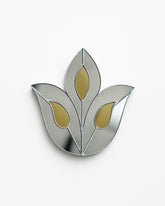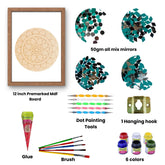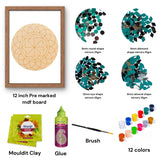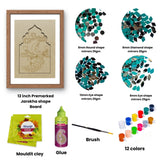Exploring the Rich Heritage of Cultural Indian Crafts
India is a land of diverse cultures and traditions, each region offering its unique contribution to the country's vast artistic heritage. Cultural Indian crafts are a testament to this diversity, representing centuries-old techniques passed down through generations. These crafts not only reflect the rich history and culture of India but also serve as a source of livelihood for millions of artisans across the country. In this blog, we’ll explore the various types of cultural Indian crafts, their significance, and how they continue to influence modern art and design.
The Legacy of Indian Handicrafts
Indian handicrafts have a rich legacy, dating back thousands of years. These crafts are deeply rooted in the cultural and spiritual life of the people, often reflecting the social and religious practices of the time. The diversity of Indian handicrafts is immense, ranging from intricate embroidery and textiles to pottery, metalwork, and wood carving. Each region of India is known for its distinct craft, making the country a treasure trove of artistic expression.
Popular Cultural Indian Crafts
India's cultural crafts are as varied as its geography. Here are some of the most popular traditional crafts from different regions:
Pashmina Shawls from Kashmir
Known for their incredible softness and warmth, Pashmina shawls are made from the fine wool of the Himalayan goat. These shawls are handwoven and often feature intricate embroidery, making them a luxurious and sought-after item worldwide.
Madhubani Paintings from Bihar
Madhubani, also known as Mithila art, is a traditional form of painting that originated in the Mithila region of Bihar. These paintings are characterized by their vibrant colors, intricate patterns, and themes that often depict nature, mythology, and daily life.
Terracotta Pottery from West Bengal
Terracotta pottery is one of the oldest forms of Indian craft, with origins in the rural villages of West Bengal. This craft involves creating beautiful, rustic pieces of pottery, often decorated with intricate carvings and patterns.
Kalamkari from Andhra Pradesh
Kalamkari is a type of hand-painted or block-printed textile, originating from Andhra Pradesh. The name comes from the Persian words ‘kalam’ (pen) and ‘kari’ (work), and these fabrics are known for their elaborate designs and rich colors, often depicting religious themes and epics.
Zari and Zardozi Embroidery from Uttar Pradesh
Zari and Zardozi are intricate forms of metal embroidery that have been practiced in India for centuries. Originating in the Mughal era, this craft uses gold and silver threads to create elaborate patterns on fabrics, often used in bridal wear and formal attire.
Rajasthani Lippan Work
Also known as Mud and Mirror Art, Lippan work involves the creation of beautiful wall decorations using a mixture of mud and mirrors. This traditional craft is native to the Kutch region of Gujarat but is widely practiced in Rajasthan as well.
The Significance of Indian Crafts in Modern Design:
While Indian crafts have ancient origins, they continue to play a significant role in modern design and decor. Today, designers and artists draw inspiration from traditional crafts, integrating them into contemporary art forms. This fusion of old and new has led to the creation of unique pieces that honor India’s cultural heritage while appealing to modern tastes.
Sustainable and Ethical Fashion
Many fashion designers are now incorporating traditional Indian textiles and embroidery into their collections, promoting sustainable and ethical fashion. Crafts such as block printing, handloom weaving, and natural dyeing are increasingly popular in the global fashion industry, valued for their eco-friendly practices and artisanal quality.
Interior Design and Home Decor
Indian crafts have also found a place in interior design, with handcrafted furniture, textiles, and decor items becoming popular choices for homes worldwide. Whether it’s a hand-carved wooden chair, a block-printed cushion cover, or a Madhubani painting, these items add a touch of cultural richness and authenticity to any space.
Artisanal Jewelry
The craft of jewelry-making in India dates back to ancient times, and today, traditional techniques such as Kundan, Meenakari, and Filigree are being used to create exquisite pieces of artisanal jewelry. These handcrafted items are not only beautiful but also carry a piece of India’s cultural history.
Supporting Indian Artisans: The Importance of Fair Trade
The preservation and promotion of cultural Indian crafts are essential not only for maintaining the country’s artistic heritage but also for supporting the livelihoods of millions of artisans. Fair trade practices ensure that these artisans receive fair compensation for their work, helping to sustain their craft and improve their quality of life. By choosing to buy fair trade and ethically sourced crafts, consumers can contribute to the continued survival of these traditional art forms.
Conclusion
Cultural Indian crafts are more than just decorative items; they are a reflection of the country’s rich history, diverse cultures, and artistic traditions. Whether you’re looking to add a touch of India’s cultural heritage to your home, support ethical fashion, or simply appreciate the beauty of handmade crafts, there’s no shortage of options to explore. By embracing and promoting these traditional crafts, we can help ensure that they continue to thrive for generations to come.


































